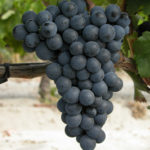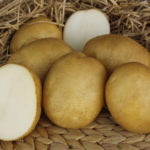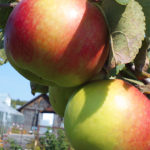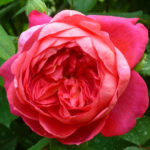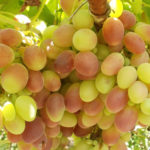Pear variety Bessemyanka
Bessemyanka is an old Russian variety of pears of national selection with fruits of late summer ripening. The name of the variety is associated with one of its features: almost all ripe fruits contain underdeveloped seeds,
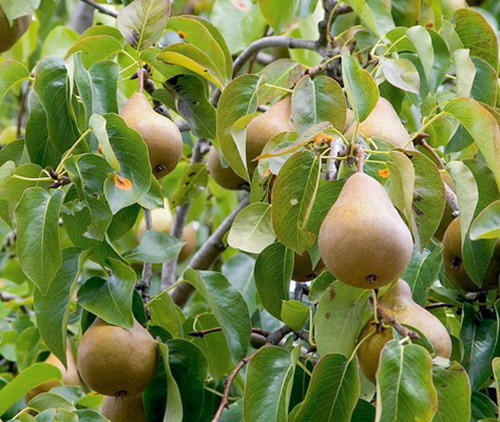
Since 1947, the variety has been on the State test. In the same year, it was zoned in the North-West (Novgorod and Leningrad region), Central (Moscow, Ryazan, Kaluga, Smolensk and Tula regions), Volgo-Vyatka (Chuvash Republic), Srednevolzhsky (Penza and Ulyanovsk regions, Republic of Mordovia) and the Nizhnevolzhsky (Saratov region) regions.
Trees are medium-sized or vigorous, the growth rate is fast, the crown is thin, wide-pyramidal in shape. The branches are long, with the ends directed upwards, painted in a yellow-brown color.
Shoots are long, thin. Lentils are whitish in color, protruding and felt to the touch. Leaves are medium in size, ovoid or oval-ovoid, green in color, whole or finely toothed at the edges. The petioles are long. Flowers are not very large, flat, white in color, collected in inflorescences of 5 - 7 pieces; rounded petals, with a leg, folded with a spoon, are located separately from each other; pedicels are very long, stigmas of pistils are at the same level with anthers or slightly below.
The fruits of the Bessemyanka pear grow small, below average size (weight usually ranges from 70 to 80 grams), short-pear-shaped, with a slightly bumpy surface and a somewhat rough skin. Unripe fruits are grassy green in color, while ripe fruits are light yellowish green in color. Fruit may be devoid of skin color or there is a slight tan (slight brownish-red blush) on the sunny side. Subcutaneous points are gray, large, numerous. The peduncles are thin, of medium length, straight, sometimes arcuate in shape. The funnel is shallow. The saucer is small, lumpy. The cup is open. Small heart. Seeds in most cases are underdeveloped, puny.
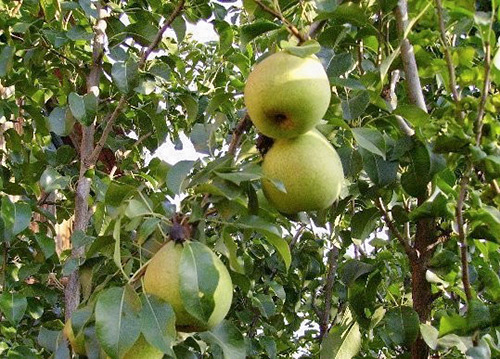
The pulp is yellowish-white in color (melon yellow), medium density, semi-melting, tender, juicy, often granulated, slightly aromatic, with a good sweet taste. The fruits, taken on time, are delicious. By chemical composition, the fruits contain: the total amount of sugars (9.1%), titratable acids (0.12%), ascorbic acid (7.8 mg / 100 g), P-active substances (51 mg / 100 g), pectin substances (6.6%). A universal variety (fresh, drying, canning).
Fruit ripening occurs at the end of August. The storage period is very short, usually up to 7-10 days. Ripe fruits tend to fall off the branches. Overripe "swell", so it is better to eat a little earlier (for 1 - 1.5 weeks).
The time of fruiting occurs in the 8th - 9th year after planting. On a dwarf rootstock, trees bear fruit since the 3rd year. The yields are plentiful and regular. The maximum yield indicator reaches 270 kg per tree. The winter hardiness of the variety is quite high, trees tolerate ordinary winters without problems. But the level of winter hardiness of Bessemyanka is somewhat lower than the level of such highly winter-resistant varieties as Voskovaya, Voshchanka, Tonkovotka.
According to the latest data, the variety is not resistant to scab; in the epiphytotic years, severe damage to fruits and leaves was noted.
This pear is partially self-fertile. The following varieties are recognized as its best pollinators: Bere Ligel, Autumn Bergamot, Williams, Ilyinka, Olvier de Serre, Tonkovotka.
The obvious advantages of the Bessemyanka pear are: high yield and winter hardiness, good sweet taste of fruits, partial self-fertility.
Speaking of the shortcomings, they indicate an insufficiently large size of the fruits, their low keeping quality and rapid overripening, susceptibility to scab.
